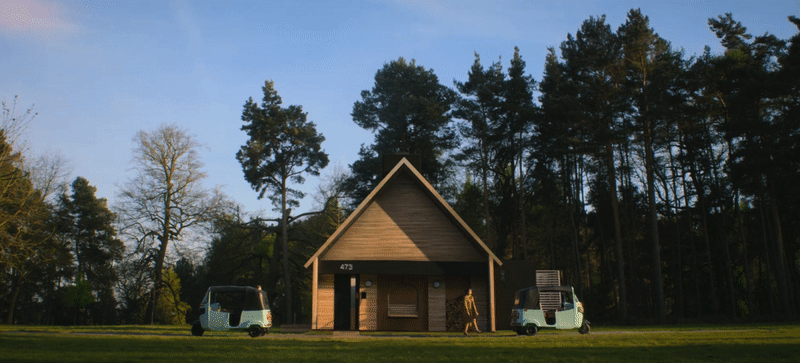Self-Driving Cars Should Be Tuk-Tuks
Why move metal when you can move humans
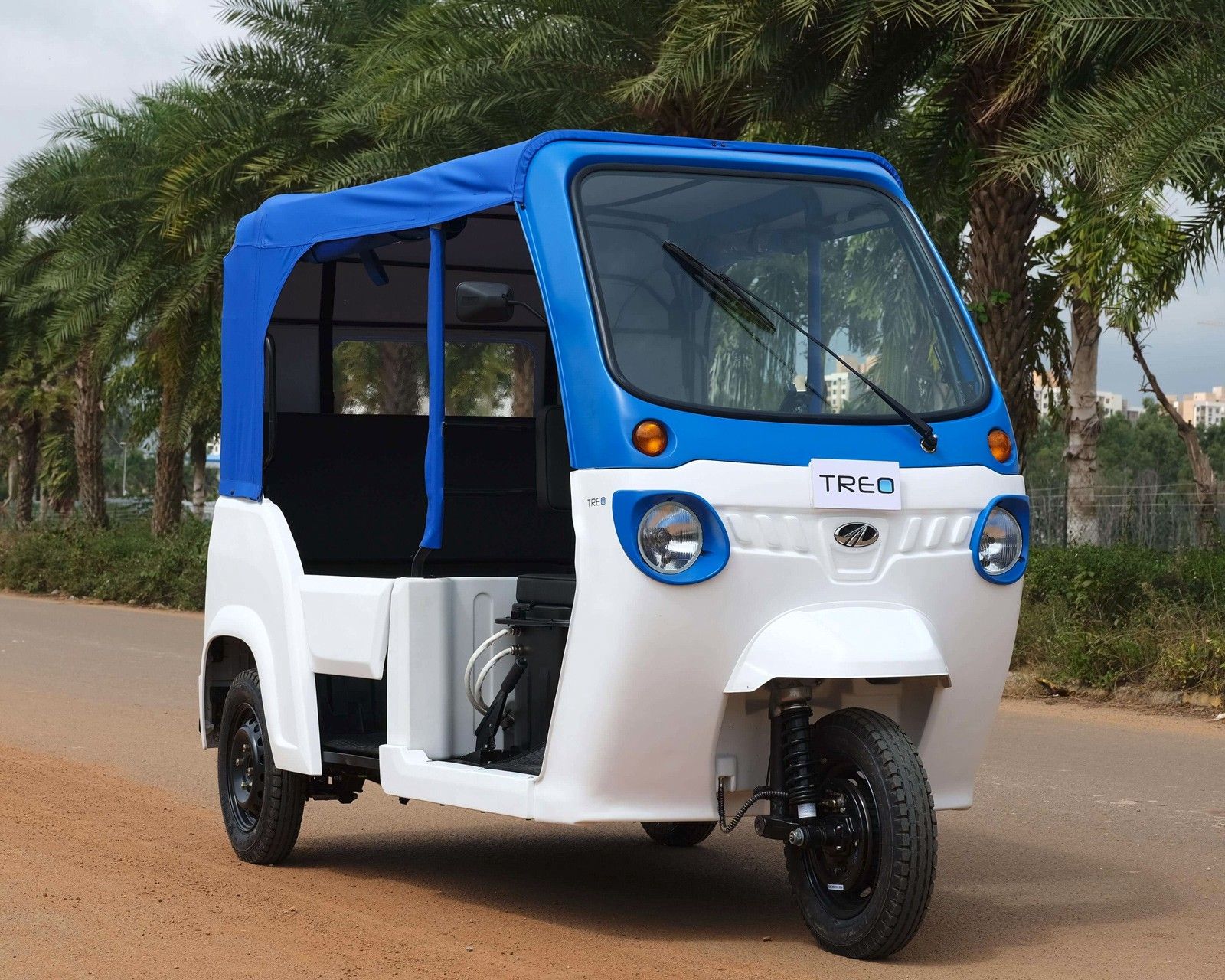
The first automobiles looked like horse-drawn carriages because that was all they knew. In the same way, the first self-driving cars just look like cars. But they shouldn’t.
In a fully or mostly automated future, we don’t need to travel around in such heavily armored vehicles. Humans can travel in something smaller, lighter and much more energy-efficient.
Something like the humble tuk-tuk, or trishaw.
This is of the most common forms of transport in India and Sri Lanka (where I live). The humble tuk is the go-to cab, off-road vehicle and sometimes ambulance. These hardy, versatile machines are cheap (around $2,000 in India) and can handle 90% of vehicle use-cases. Even the all-electric Mahindra Treo is only about $3,100.
Self-driving, electric vehicles shouldn’t look like cars any more than cars looked like carriages. They should look like trishaws.
Size
Cars and SUVs transport more air and metal than human beings. The average car in the US carries 1.5 people and SUV carries 1.9. This wasted space is just traffic, it’s an imposition on the rest of humanity.
Tuks carry the same amount of people in much less space. Have a look.
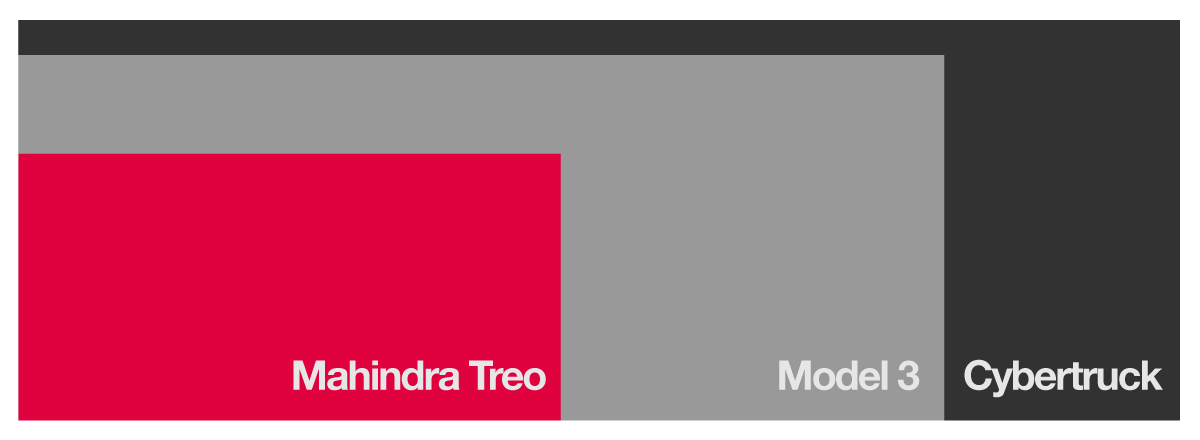
From the top-down, you can see how much smaller a trishaw (or tuk-tuk) is. And remember, they’re carrying the same amount of people.
In terms of seating the Mahindra Treo carries 4–5 people. The Model 3 carries five and the Cybertruck six. In my experience, tuks are like clown cars, you can fit an infinite number of people and a surfboard. But for further calculations let’s just say that each vehicle is shared, and carrying four human beings.
Space
Given that each vehicle is carrying the same amount of humans, how much space to they take away from humanity? Have a look:
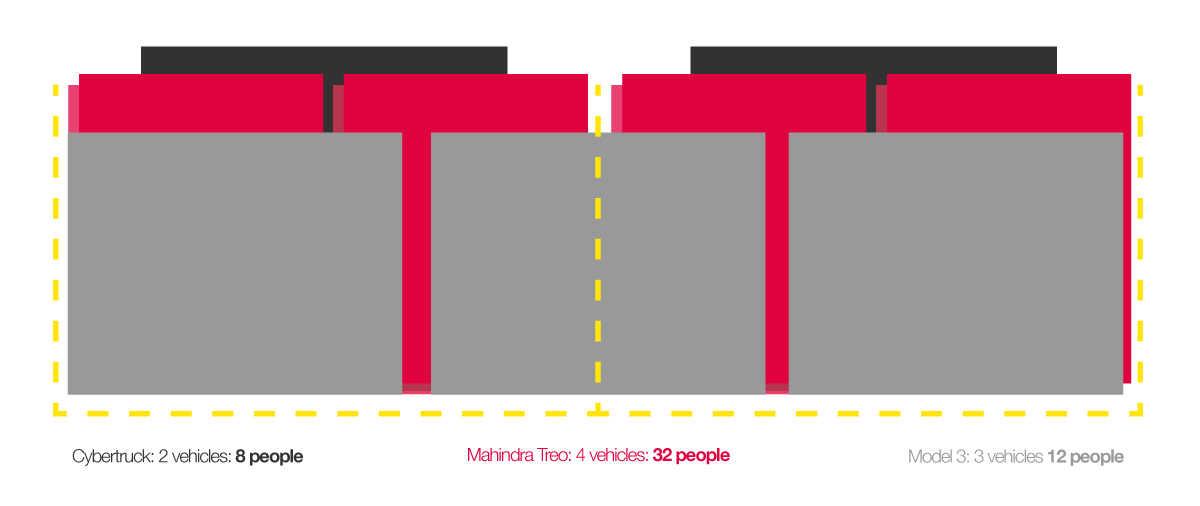
I’m assuming that in a self-driving future you can drive vehicles much closer together. In two 3m lanes, you can carry 32 people in self-driving trishaws. This is 4x as many as a Cybertruck (8 people) and nearly 3x the Model 3 (12 people).
If you consider traffic to be the art of moving people and not vehicles, tuks are by far the better option. By a factor of at least 3.
And that’s not all. The weightiest issue of all is weight.
Weight
Modern western vehicles move more metal than human beings. And burn energy (and carbon) to do so. If you drive alone in a car you’re imposing 1.5 tons of metal on everyone else and the Earth. Why?
A tuk, in contrast, is very lightly armored. It’s like a mammal vs. a triceratops. I have been hit by a tuk and it’s not that bad, at 337 kg it’s not much worse than getting hit by two linebackers. My hand just went through the window, which popped out, and I fell over. If I’d braced myself I could have knocked the tuk over. I sometimes replay that incident in my mind, imagining myself more heroic.
Against a Cybertruck, I’d have no chance. The Cybertruck seems to have no crumple zone, it’s just a battering ram of solid steel. The thing is honestly a weapon, a blunt steel knife cutting through traffic. All trucks and SUVs are like this, they destroy human beings and other vehicles. Objectively, cars and trucks shouldn’t be allowed on the streets at all.
I could stiff-arm a trishaw. Against a car or truck, I’d just be dead.
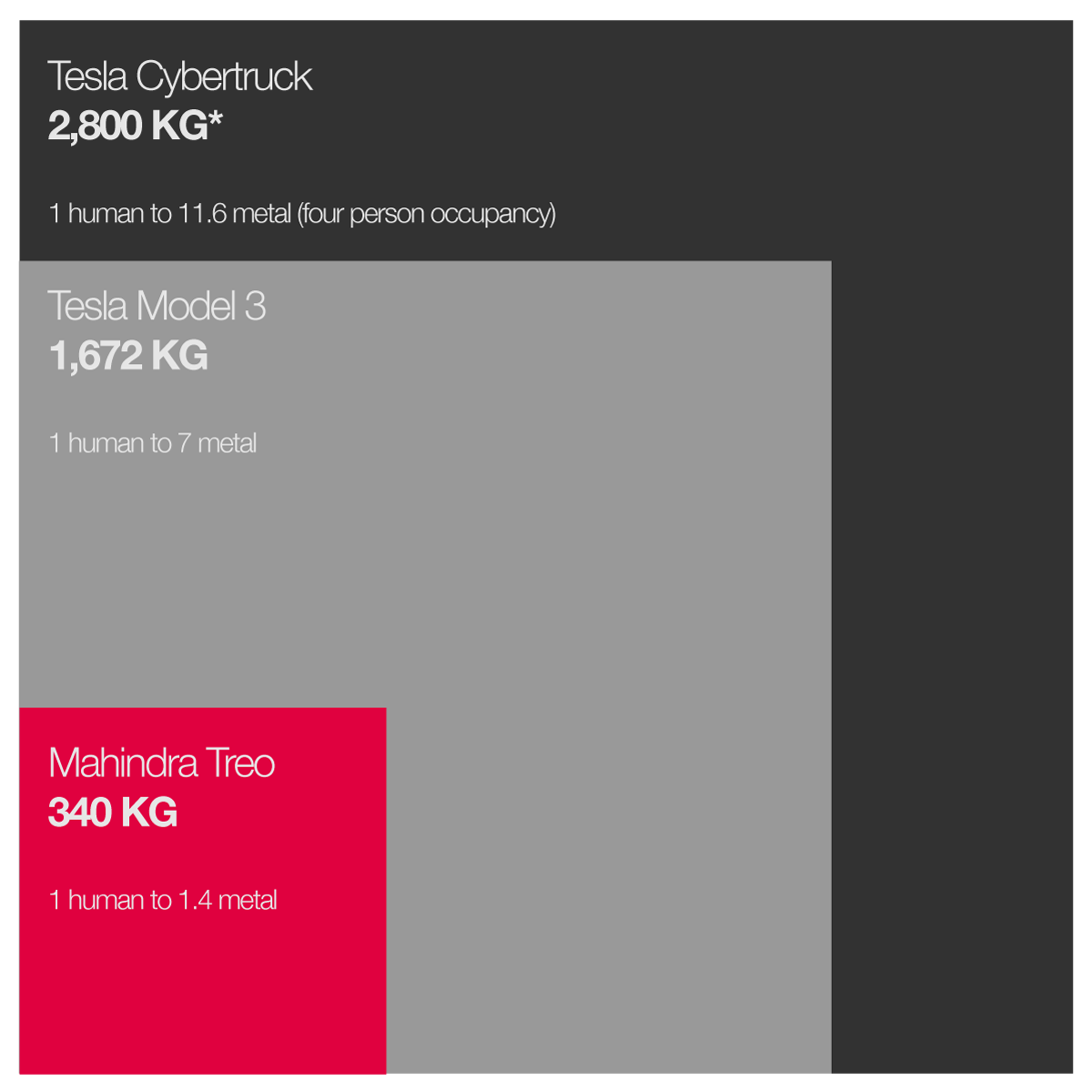
Nevermind the murder propensity, think also about the energy costs. Moving weight takes energy, and on cars and trucks that energy is largely wasted. Let’s say you’ve loaded each vehicle with four people.
In a Cybertruck, you’re still carrying around nearly 12 times as much metal. In a Model 3, you’re carrying around 7 times. In a tuk, by contrast, it’s nearly one-to-one (1.4). The human to machine ratio is much, much better on a trishaw. It’s by far a more human vehicle, both for our soft bodies and the planet.
Again, all that weight requires energy to move. Yes, these vehicles are all-electric, but most grids are still mostly fossil-fuel based. They still produce emissions, just somewhere else. Even in a fully renewable future, energy is a finite resource. We shouldn’t be burning it to move metal, and our transport shouldn’t be battering rams.
Use Cases
You could say, however, that tuks have a limited use case. They’re best for urban travel, trips of less than 25 km. This is true, and this is also the vast majority of human transport.
For longer trips, we should have efficient, heavy transport, and it should be public. This magical technology called a bus or a train. Self-driving cars, as designed, actually make the traffic problem worse. There is no amount of efficiency gain that can make them as efficient as a humble old bus.
Hence for intercity or longer-haul trips, people should use public transit, and switch to tuks for the last mile. Or scooters, or feet, or wheelchairs. Anything but cars.
Safety
Tuks are also less safe for their occupants than cars because you’re not inside of a weapon. But there are two points here. One is that this private transport should be moving at lower speeds, and a fully automated future should be safer.
For anything faster (ie, highways) people should be on a bus or train. For personal, slower transport you should be in a tuk. And this reflects reality. People buy Lamborghinis in my town, but the average speed is like 8 KPH. Tesla’s boast about their 0–60 speed but it doesn’t matter in traffic.
Rethinking The Future
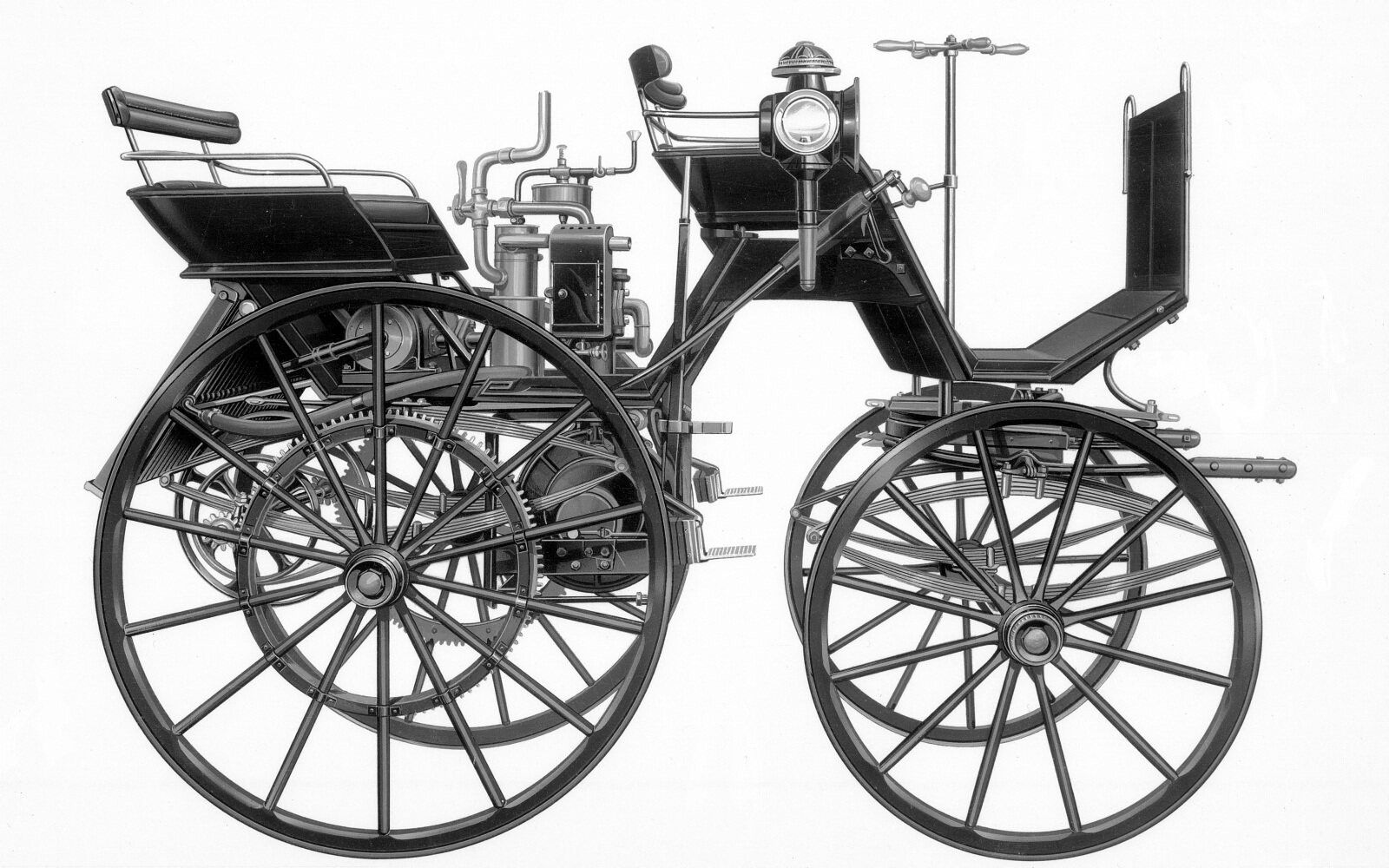
Today we are like the first car-builders, still thinking about horses. We need to think differently. Self-driving, automated cars should be about moving humans, not moving metal. And they should be viewed as a supplement to public transport, not a replacement.
At the same time, we need to take advantage of the infrastructure and manufacturing we have — but that model shouldn’t be the car and highway model of the west. I think we can safely say that it is a failed model, leading to death, broken communities, massive emissions, and traffic.
The self-driving car shouldn’t be a car at all. It should be a tuk.
